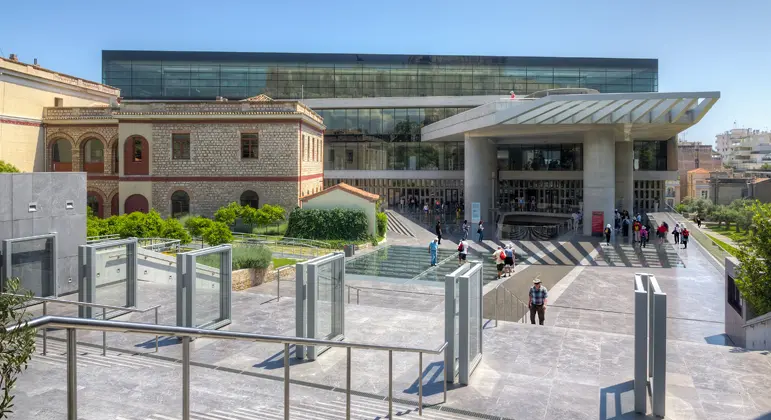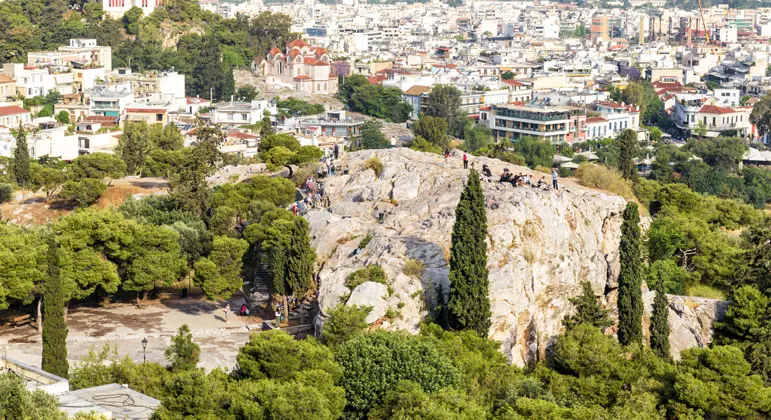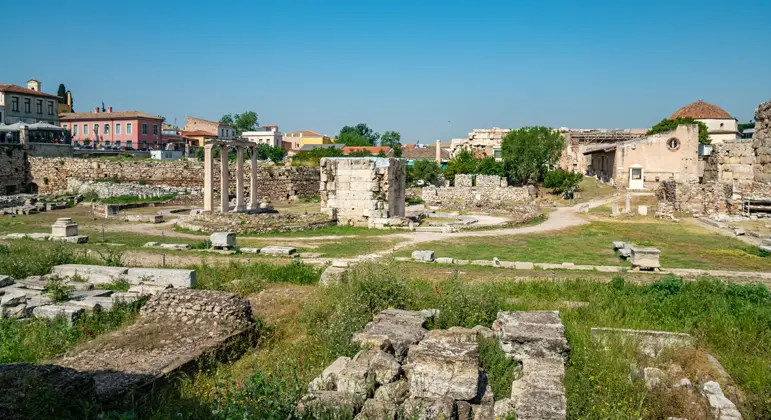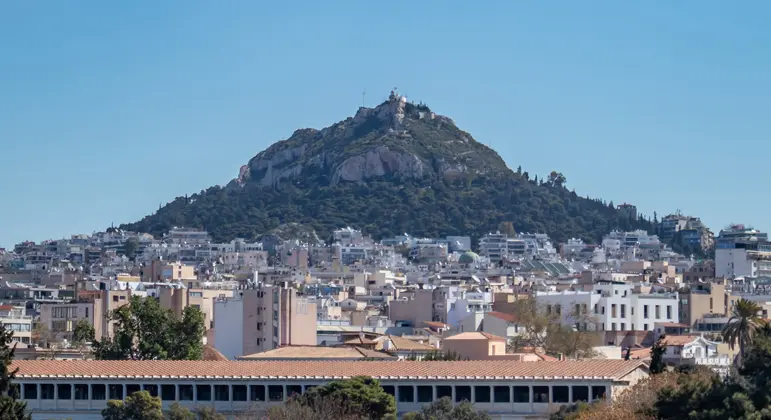If the Acropolis is the most famous of the Athenian landmarks, the Parthenon is far and away from the most iconic. Dedicated to the goddess Athena, the temple was completed in 438 BC after several years of construction. The cultural weight of the Parthenon is unique in the world, and once you’re up there—far above the traffic of the city below—staring up at the massive marble pillars with views of Athens extending all the way to the sea, it feels almost ethereal. As you make your way up the steep (but relatively short!) path to the top, the first structure you’ll see is the Propylea, which was the monumental gateway to the ancient sacred complex. You’ll also spot the Erechtheion, a structure famous for its six beautiful female Caryatid sculptures. While the structure of the Parthenon is mostly intact, the artifacts that were once there are now mostly on display in the stunning Acropolis Museum, which is located below the Acropolis itself. Inside it, you can peruse some 4,000-ancient works of art and artifacts starting from the Greek Bronze Age through the archaic and classical periods and beyond, housed in five collections on three levels. In addition to the permanent collections, don’t miss the excellent temporary exhibitions on the ground floor and check out the large restaurant with its astounding Acropolis views, too!
Note that the Acropolis Museum is separate from the National Archaeological Museum, which is located in a different area of Athens. Highlights there include the gold mask of Agamemnon, the bronze statue of Zeus, frescoes from Akrotiri (the Minoan ruins in Santorini said to be the original Atlantis), the Antikythera Mechanism—an ancient analog “computer” retrieved from a famous shipwreck—and hundreds of intricately painted ancient Greek vases.










 Deutschland (€)
Deutschland (€)
 Turkey (€)
Turkey (€)

 Santorini
Santorini  Athens
Athens  Patmos
Patmos  Istanbul
Istanbul  Crete
Crete  Corfu
Corfu 









